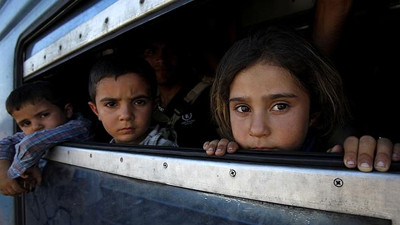When a Western soldier suffers from post-traumatic stress disorder, there are doctors and organisations who can help them recover from the heartbreaking legacy of war.
When it is someone from Afghanistan, where bombings regularly wreak devastation and tear families apart, you are unlikely to find any assistance, since there is little understanding of mental illness in the country.
“The most common treatment is to take your loved one to a religious shrine where they are chained to walls or trees for up to 40 days, fed stale bread, water and ground pepper, and read dubious lines from the Qur’an by individuals with no medical or, for that matter, religious training,” documentary-makers Jamie Doran and Najibullah Quraishi told news.com.au.
Many of the shrines are nothing more than money-making enterprises run by con artists with little or no religious training. The filmmakers hope their footage of the inhumane businesses will force uninterested police and government officials to act.
You might have thought that civilians and soldiers living in war zones would become hardened to this life, and find it almost normal. In fact, the pervasive atmosphere of violence and fear takes a bitter toll, and this terrible truth can be seen most clearly in Afghanistan, the site of the longest war ever for Australia and the US.
“When you talk to them, there is little joy in their words any more,” said UK-based director Doran, after filming Living Beneath Drones for Al Jazeera in the region. “Anyone with a family, children, someone you love, is forever in fear of losing them. You can see it in their worn faces.”
Hope and confidence in the future had steadily dissolved, with millions now thought to be suffering from PTSD, with little hope of treatment. Only one hospital in the entire country is dedicated to mental health, despite official estimates indicating that 60 to 70 per cent of the country’s population now suffer from some mental health problem. Unofficial estimates go as high as 95 per cent. This is the real human impact of living with the daily threat of death.
“Over the past 14 years or so, I have sensed and experienced a discernible change in Afghans,” added Doran. “They’re still beautiful people, but they’re also angry and confused.”
Directors Doran and Afghanistan-based Quraishi wanted to lay bare the stark facts about the mental toll inflicted on those who live in the world’s most heavily drone-bombed country, and how debilitating the psychological problems can be even for those who are not physically injured.

“To watch children screaming, running to their homes in utter fear, is heartbreaking. But very often it’s the women, the mothers and daughters, who suffer most. Mostly, they must suffer in silence, such is the stigma attached to females with mental health issues. Many take their own lives.” (Photo: AP)
Unmanned drones are a dangerous and frightening force. More than 1000 are known to have hit targets in the past five years, but there is no record of when and where the strikes took place, what they destroyed, or who they killed.
“In the cities, a suicide bomber or Taliban unit can attack at any time,” said the filmmakers. “You may simply be travelling to your place of work at the usual time or having a cup of tea at a cafe when an attack occurs. It’s the uncertainty that affects everyone in urban areas. But imagine living in a remote village with your family and the drones begin circling in search of armed men on the ground. It can happen several times every single day.”
Neither believe that civilian casualties are intentional, but remotely-controlled weapons can easily harm the wrong person or place in innocent communities.
“To watch children screaming, running to their homes in utter fear, is heartbreaking. But very often it’s the women, the mothers and daughters, who suffer most. Mostly, they must suffer in silence, such is the stigma attached to females with mental health issues. Many take their own lives.”
Doran and Quraishi say Afghanistan is a “broken country” and worse than it has ever been, as once close-knit communities fall apart under the pressure. Many have left their villages for refugee camps elsewhere in the country, seeking homes that are relatively safe and peaceful - places that are few and far between.
“The allied nations that invaded - or liberated, as some still claim - Afghanistan at the beginning of the 21st century have managed to leave an even bigger mess than they inherited.
“An entire generation brought up in daily fear of death does not augur well for either their future or ours. It may not be entirely fair, but they blame the West and allied nations for the state of their country. Expect some of them, at least, to seek revenge in the years to come.”
No one wants to take responsibility for the tragedy in Afghanistan, but perhaps this dire warning for the world could make us take notice.



